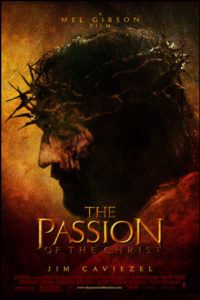What is the Shroud of Turin? What does it mean? Photographer Barrie Schwortz of STURP (Shroud of Turin Research Project) describes the Shroud as "religion and science living on the same piece of cloth." And he should know; Schwortz spent five days in 1978 working as a principal photographer documenting the efforts as part of the Shroud of Turin Research Project that was led by physicist John Jackson, who worked for NASA in the 1970s. When Jackson ran a photograph of the Shroud of Turin through a VP-8 digital analyzer (a specialized computer typically used to map three dimensional simulation models from two dimensional images) at NASA, the remarkable result of his experiment led to the commission of the STURP (Shroud of Turin Research Project) team. Jackson's test culled a three dimensional image from the two dimensional photograph...and no other painting or work of art has ever reproduced such a phenomenon. Only photographs of three dimensional objects can produce that same effect. The test result clearly indicated that the fabric had once been used to wrap a three dimensional object, which in this case was the dead body of a human being, believed to be none other than Jesus, the Christ. No matter what else might be said or written, this religious artifact will always have doubts about it veracity and authenticity due to the lack of a clear chain of custody and the now controversial results of carbon dating tests. Like any other religious artifact, the fact that it exists cannot be offered as irrefutably proof of the existence of God, because proof does not … [Read more...]
The real face of Jesus, part 1
Not that long ago the History Channel featured a phenomenal two hour special titled "The Real Face of Jesus". The program provided new and extensive details about a scientific study of the Shroud of Turin, plus information about alleged corroborating evidence, and an attempt to reconstruct the facial image from the shroud by an expert at producing accurate and lifelike death masks. Of course, skeptics have argued that experiments have proved that the image on the shroud can be produced by artificial means, but scientific evidence rebuts their claims -- these experiments might create an image that superficially resembles the image on the shroud, but not with all of the unique characteristics of it. Carbon-14 dating allegedly dated the material of the shroud as being between than 1260-1390 A. D., but scientists from the STURP team have subsequently invalidated their own findings. Over the years, the Shroud has been handled, lost, burned, hidden, and taken as plunder in the course of its known history. The chain of ownership is consistent after the date provided via Carbon-14 dating, but a history of an alleged burial shroud for Christ existed from the first century A.D., with a miraculous healing of King Agar V. Some people question whether or not Jesus actually existed, but as the Catholic priest Father Jonathan Morris has said about Jesus, "We don't believe in an idea. We believe in a man." If Jesus the human existed, as the Bible and history indicates, and if the story of his crucifixion are accurate, the man suffered horrific injuries and inconceivable … [Read more...]
Carbon dating and the Shroud of Turin
If queried for their opinion about the authenticity of the Shroud of Turin, probably 9 out of every 10 people would essentially say the same thing -- carbon testing performed in 1988 clearly proved that the religious artifact was nothing more than a brilliantly conceived fraud. I can't say that I find fault with the Shroud's critics, because I've seen the same evidence. After all, test results obtained by careful application of the scientific method are really tough to dispute. And the 1988 tests seemed to prove beyond any reasonable doubt that the Shroud was a forgery. Even as stubborn as I can be when it comes to accepting "facts" when other people have told them to me, I must concede that when multiple independent tests have reached the same conclusion, it is almost always because they invariably have gotten the correct answers. It should be noted that the key word in the sentence above is "almost." As part of the Shroud of Turin Research Project (STURP) three different laboratories in Zurich, Oxford, and Tucson performed independent carbon dating tests. They all concluded the alleged fake shroud was supposedly manufactured sometime between 1290 and 1360 AD, ostensibly for no other reason than to fool a lot of people and legitimize belief in the crucifixion and resurrection of Jesus. Interestingly, the STURP experiments produced a puzzling mix of results. Tests and analysis eliminated any possibility the image on the fabric had been painted. One test indicated that a copious amount of human blood had saturated the fabric after oozing from the gruesome … [Read more...]




